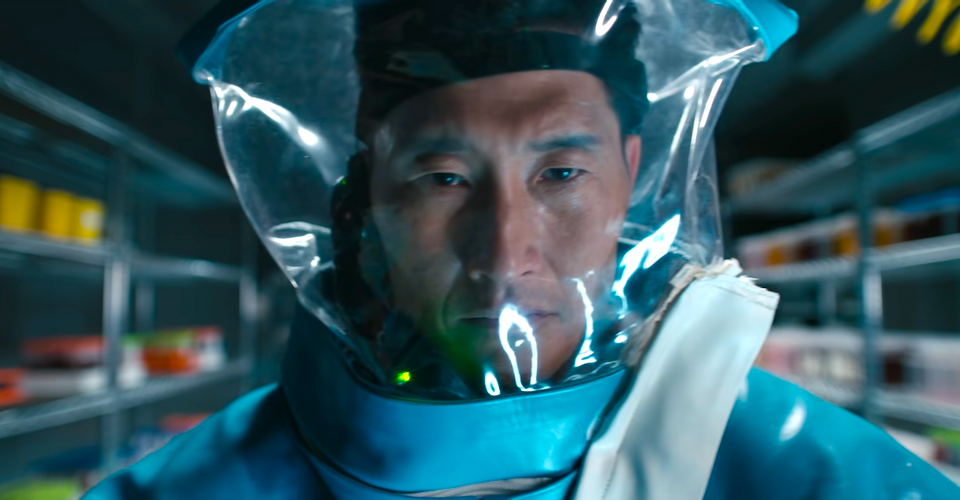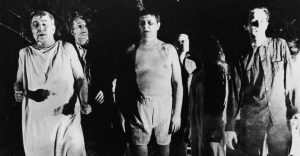The Hot Zone: Anthrax True Story – What Nat Geo Left Out

Nat Geo’s The Hot Zone: Anthrax tells the story of the Amerithrax attacks that took place after the 9/11 attacks rocked the U.S. — but just how much of the story was left out? Like most series that are based on true stories, Hot Zone: Anthrax takes some liberties with the truth to create a drama worthy for the screen. While the series mostly sticks to the true events of the anthrax terrorist attacks that followed September 11, there are some things that Hot Zone either changed or left out.
While the country was reeling from terrorist attacks against the Twin Towers in New York City, another terroristic threat was looming — anthrax. According to the Center for Disease Control, anthrax is a serious infectious disease caused by the bacteria Bacillus anthracis. Because of anthrax’s virulence, the ease of acquiring the biological agent, and its ability to be spread almost undetected, the CDC has labeled anthrax as one of the most likely biological agents to be used in a bioterrorism attack.
The Hot Zone: Anthrax Cast & Character Guide
All of these factors likely contributed to the use of anthrax in the biological terrorist attacks that followed 9/11. The attacks, dubbed the “Amerithrax attacks,” targeted politicians and members of the media. Beginning on September 18, 2001, anonymous letters laced with anthrax powder were sent through the mail to government buildings and news offices throughout the country, resulting in the death of five people and infecting 17 others. The attacks have been linked to Dr. Bruce E. Ivins, played by Tony Goldwyn in Hot Zone: Anthrax, a microbiologist who worked for the United States Army. Here’s everything Hot Zone: Anthrax left out from the true story.
The Amerithrax Case Took Nine Years To Close

The Amerithrax attacks began only weeks after the tragedy of 9/11 — but while Hot Zone: Anthrax hit the fast-forward button on the investigation, it actually took nine years for the FBI to wrap up the case. On February 19, 2010, the FBI announced that the case was, finally, officially closed. Because Ivins died of an acetaminophen overdose on July 29, 2008, he never faced criminal charges for his part in the Amerithrax attacks. Ivins was named the sole person of interest in the case by the FBI on August 6, 2008, just a little more than a week after his death. Hot Zone: Anthrax streamlines the investigation timeline to fit neatly into six episodes, but in real life, the investigation was a grueling and time-consuming process that involved more than 10,000 witness interviews on six continents, the processing of over 6,000 pieces of evidence, and the development of entirely new scientific methods to solve the case.
FBI Agent Matthew Ryker Is A Fictional Character

Daniel Dae Kim, star of Hawaii Five-0, spearheaded the Amerithrax investigation in Hot Zone: Anthrax as FBI Agent Matthew Ryker — but in reality, Agent Ryker’s job was done by a large team of FBI agents and federal specialists. The steps Agent Ryker took to solve the case were based on actual events, but Ryker was created as a composite of the real agents that worked the case over its nine-year span. According to the official FBI website, the Amerithrax task force consisted of “25-30 full-time investigators from the FBI, the U.S. Postal Inspection Service, and other law enforcement agencies, as well as federal prosecutors from the District of Columbia and the Justice Department’s Counterterrorism Section,” all of whom contributed hundreds of thousands of hours to the case. In order to coincide with the streamlined timeline — and to create a character that audiences could connect to — Hot Zone: Anthrax created Matthew Ryker to head the series.
Destruction Of An Anthrax Archive Hampered The Investigation

In order to track down the source of the anthrax spores used in the Amerithrax attacks, the FBI and other federal agencies compared the samples they were able to gather against any others they had access to; if they were able to find any with genetic similarities, they would be able to track down where the samples might have come from. An anthrax sample archive at Iowa State University might have had the answers that the FBI needed — however, the FBI and the CDC had approved the destruction of the Iowa anthrax archive shortly before the attacks began. Without the massive collection of samples from the archive, the FBI was forced to reverse engineer the samples they had from the letters, as well as collecting thousands of samples from labs around the world, using valuable investigation hours that didn’t have to be wasted if the archive still existed. Collecting directly from the labs themselves also gave Dr. Ivins time to destroy the samples that could have proven his connection to the attacks.
The Anthrax Strain Could Not Be Concretely Tied To Dr. Ivins

Hot Zone: Anthrax featured some incredible feats of science that led to the conclusion of the Amerithrax case; however, not every conclusion the government reached was rock solid. The FBI was able to narrow down the anthrax strain involved in the attack to a single parent strain and a single flask it could have come from — a flask that was overseen by Dr. Ivins. While that should have been a slam dunk against the doctor, it wasn’t the smoking gun that Hot Zone: Anthrax portrayed it as. The FBI later admitted that there were 419 people who also had access to either this specific flask or who had received samples from the flask. With this admission, the pool of people who could have potentially created the anthrax spores used during the attacks greatly increases.
Dr. Ivins May Not Have Worked Alone

In Hot Zone: Anthrax, Daniel Dae Kim’s character solves the case nicely. However, while the FBI is confident that Dr. Ivins was the lone wolf who carried out the Amerithrax attacks, there are many who are not convinced he acted alone or that he was involved in the attacks at all. Skepticism around access to Flask RMR-1029 opened the door for questions surrounding the validity of the FBI’s findings — especially after the agency had already wrongly accused Steven Hatfill of the crime. A portion of the Amerithrax victims — including Senator Patrick Leahy— as well as some of Dr. Ivins’ coworkers and various government officials all stand firmly in the fact that Dr. Ivins could not have worked alone.
The evidence against Dr. Ivins was largely circumstantial, to the point that grand juries weren’t comfortable enough to indict him. Many believe that the scale of the attacks would have required the assistance of someone with a higher security clearance, like a CIA agent, and the lack of anthrax spores on both his body and in his home raises major questions. Others still are convinced that terrorist cells in Iraq had a hand in providing the anthrax used during the attack, as well as conspiracies about the FBI making a cover-up story out of Dr. Ivins. Dr. Ivins’ death means it is likely that the full extent of the true story may not ever be known, and with the FBI officially closing the case in 2010, it’s unlikely that it may ever be reopened. While Hot Zone: Anthrax makes the case against Dr. Ivins seem set in stone, there is still great discourse surrounding the facts of the case and whether Dr. Ivins had the ability to pull off the Amerithrax attacks single-handedly.
About The Author

















